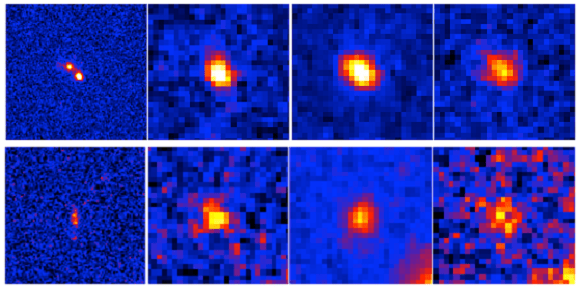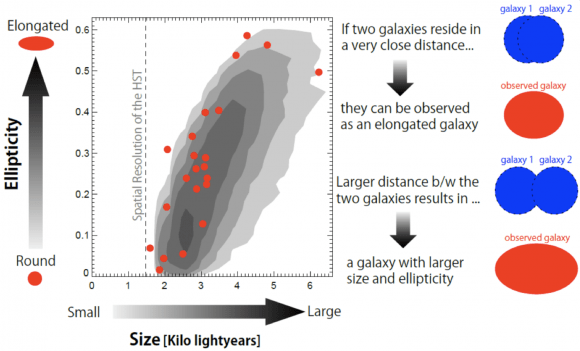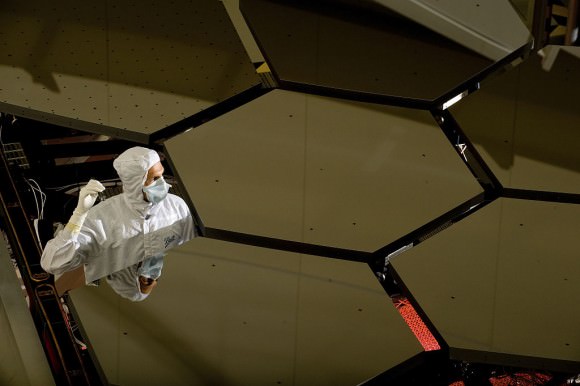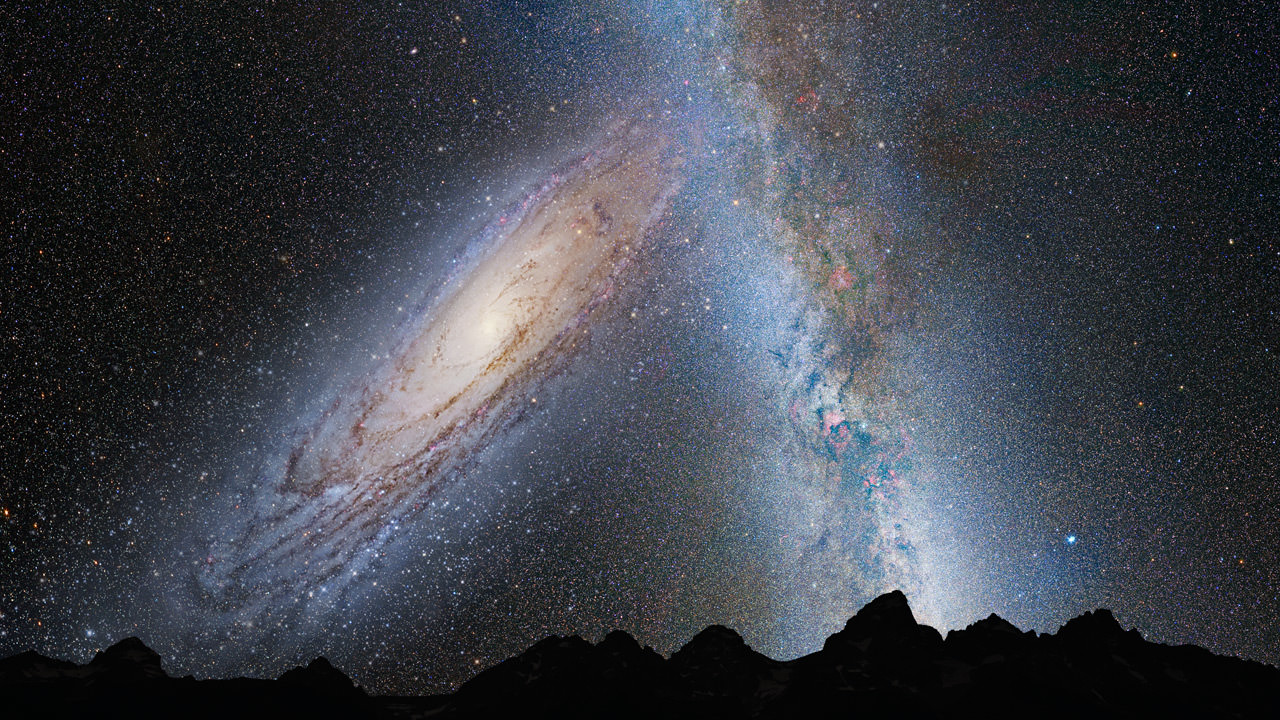In about 4 billion years, scientists estimate that the Andromeda and the Milky Way galaxies are expected to collide, based on data from the Hubble Space Telescope. And when they merge, they will give rise to a super-galaxy that some are already calling Milkomeda or Milkdromeda (I know, awful isn’t it?) While this may sound like a cataclysmic event, these sorts of galactic collisions are quite common on a cosmic timescale.
As an international group of researchers from Japan and California have found, galactic “hookups” were quite common during the early universe. Using data from the Hubble Space Telescope and the Subaru Telescope at in Mauna Kea, Hawaii, they have discovered that 1.2 billion years after the Big Bang, galactic clumps grew to become large galaxies by merging. As part of the Hubble Space Telescope (HST) “Cosmic Evolution Survey (COSMOS)”, this information could tell us a great about the formation of the early universe.
Previous research has shown that some 200 million years after the Big Bang, the universe was filled with pre-galactic clumps. These cold gas clouds were roughly one-hundred times smaller and one-million times less massive than modern galaxies. It is from these clumps of gas that the first stars and galaxies are believed to have formed.

After the first small galaxies were formed, they began to merge together, forming the larger galaxies we see today – i.e. which contain hundreds of billions of stars and measure thousands of light years across. For some time, scientists have been trying to see galaxies as they existed in the early universe, at a time when they were still actively forming stars.
Unfortunately, given the distances involved (13 billion light years) and the fact that most of the galaxies in the young universe were quite small, getting a sense of their detailed structures has so far been impossible. However, the research team – which included members from Ehime University, Nagoya University and Tohoku University in Japan and the Space Telescope Science Institute (STScI) and the California Institute of Technology in the US – used the Subaru Telescope and the Advanced Camera for Surveys (ACS) on the Hubble Space Telescope.
Whereas the Subaru Telescope helped locate galaxies in the early universe with its wide field of view, the high spatial resolution of Hubble’s ACS was used to investigate the details of their shapes and internal structures. Using this two-pronged approach, the team then looked back 12.6 billion years, roughly 1.2 billion years after the Big Bang, and noted something very interesting about the galactic structures they saw.
In a paper published by The Astrophysical Journals, the team indicated that out of the 54 galaxies they observed, 8 had double-component structures, which indicated that they were the result of two galaxies merging with each other. In addition, they found that with the remaining 46 galaxies, their elongated shapes – as well as a correlation between their ellipticity and size – might indicate that they too were merging galaxies.

After testing this theory, the team found that they were in fact correct. In all cases, the galaxies only appeared as single entities because the distance between their two constituents was so small. This theory was borne out when they looked for a possible correlation between the size of the galaxies and their level of star formation. Again, they were proven correct, as the smaller and more closely-merged galaxies showed a higher rate of activity.
All of this indicated that galactic mergers (or “hookups”, to use the bawdy term) were a common occurrence in the early universe. As Dr. Nick Z. Scoville – the Francis L. Moseley Professor of Astronomy at Caltech, and an author of the study – told Universe Today via email:
“This work uses very deep imaging from both Hubble and the Subaru telescope to establish a beautiful correlation between the sizes and elongation of galaxies when the universe was only 10% of its present age. The very high resolution Hubble images are used to show that the elongation of the galaxy images seen in the ultra sensitive Subaru imaging is due to overlap multiple galaxies. This research clearly shows the prevalence of galaxy merging in building up the earliest galaxies and promoting more rapid formation of stars.”
Prior to this, astronomers were in the habit of thinking that single structures observed in the early Universe by Hubble were in fact single galaxies. In contrast, this research suggests that these small, early galaxies actually consisted of two or even more galaxies. This is sure to have implications for the study of galactic formation and evolution, which predicts that small galaxies evolved through successive mergers to create the larger ones we know today.

As for what’s next, that will likely have to wait upon the deployment of the next generation of space telescopes. Currently, astronomers have a difficult time seeing clear to objects that are so very distant from Earth. But with the improved instruments that will be put into service in the coming years, scientists hope that they might be able to take the next leap, which will likely involve resolving the internal structure of early galaxies.
For example, when the James Webb Space Telescope (JWST) is deployed, astronomers believe they will have the power and the spatial resolution needed to see even further into the past, and with greater clarity. And we can expect they will have plenty to say about the many galaxies they see, located billions of lights year away and billions of years in the past!
Further Reading: National Astronomical Observatory of Japan – Subaru Telescope


creepy, to think that a sample shows 100% mergers between lots of empty space.
something like the only 2 cars on the road crashing, and happening in every state.